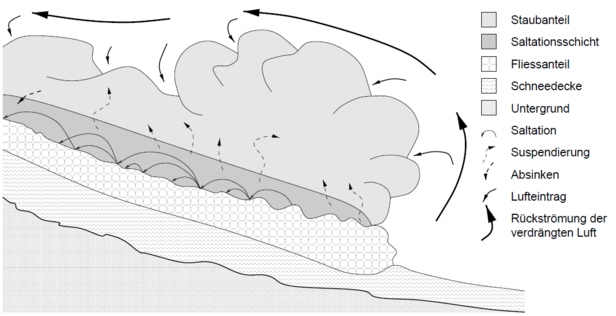Following Norem's description of powder snow avalanche formation and structure (Norem, 1995), SL-1D consists of a suspension layer and a socalled saltation layer. The latter is only a few meters deep and is modelled by depthaveraged mass and momentum balances. In the suspension layer, the mass and momentum balance equations for the mixture are supplemented by the snow mass balance and the transport equations for turbulent kinetic energy and dissipation.
Mass and momentum exchange between the two layers is determined by particle settling, turbulent diffusion against the concentration gradient, and aerodynamic shear forces. The net erosion or deposition rate is a function of the kinetic energy of the impacting particles. The saltation layer acts back on the suspension layer in that saltating particles extract momentum from the air flow. The preliminary estimates of the model parameters can be refined by means of saltation trajectory simulations.
Three-dimensional simulations with a simplified model clearly showed the importance of snow erosion and deposition in practical applications. This approach is well suited for coupling to a dense-flow avalanche model. For more details about the model and the validation see Issler et al. (1998), Issler (1998) and Förster (2000).
